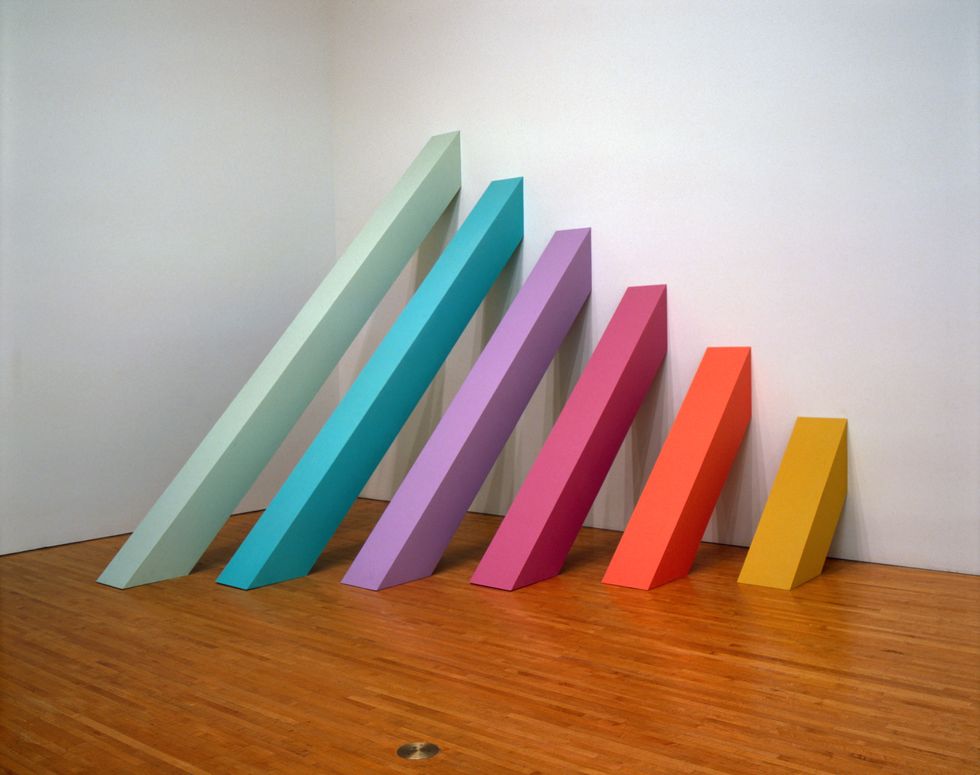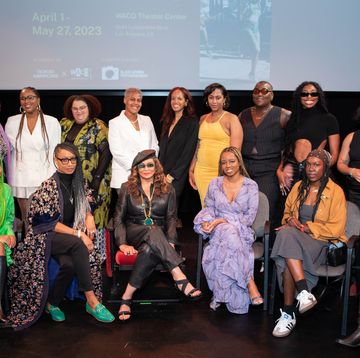Some people speak in soundbites. Judy Chicago speaks in theses. She says things like “There is a global structure of male terrorism,” and “Football exists as brilliant propaganda for the patriarchy” without irony or condescension, and best of all, without apology.
“I had to become an expert at explaining my own work, and the themes of my art,” says the 79-year-old from her studio in New Mexico, “because art criticism and art curation, for years, that was a man’s game. When I was coming up as an artist in the ‘60s and ‘70s, there was supposed to be a mystique about artists—and I guess there still is. But in my experience, with male artists, people speak for them—critics, curators, journalists. Nobody spoke for me for a very long time, you know. For decades, nobody would write about my work, or if they spoke about my work, it was in horrible terms. So I had to speak for my own art, otherwise I wouldn’t have been able to survive.”
But the artist has survived, and her tireless female-focused work has landed a solo show at Nina Johnson Gallery that's become required viewing for legions of art history and social justice students worldwide. For everyone else, a quick intro: Judy Chicago emerged as a lone female voice in the biker-dude-neon-sex art scene of ‘70s Los Angeles. Her most famous work is called “The Dinner Party,” and it features stylized imaginary vaginas of famous historical women on plates. (You can guess the mixed reactions it got in 1974, when it first hit the art world.) Chicago often works in traditionally “female” mediums like embroidery and ceramics, and employs legions of trained artisans to help execute her massive installations. She likes painting nude women. She likes talking about vulvas. She doesn’t give a shit if you don’t want to hear it.
More From ELLE

I learned that firsthand at age 19, when Chicago was my studio art professor. On our first day, we watched a video of a woman giving birth in a bathtub, with the camera tightly focused on her naked body. On our last day, a student evangelical group tried to have me expelled for painting the Virgin Mary giving birth to Jesus, with the canvas tightly focused on her naked body. (“You have to put that in your article,” Chicago commands, so here you go.)
This week marks the opening of Judy Chicago: A Reckoning, a major survey spanning Chicago’s long career of painting, sculpture, and even pyrotechnics. (For more on those pyrotechnics, see the Nina Johnson show, titled Atmospheres and featuring Chicago's experiential works in colored smoke, smoldering fire, and—of course—the naked female form.)
To celebrate Chicago's Miami exhibitions, the artist has collaborated with MaxMara on a limited-edition shirt, which joins a long line of branded political products made by fashion brands. (See: Missoni pussy hats, Lingua Franca voting sweaters, Dior everything.) But for a second-wave feminist icon, is “luxury feminism” an oxymoron? “Do I think that’s selling out? Hell no. It’s extending my goals of educating through art…if feminism is being marketed for nothing but capitalist purposes, yes, that’s a potential problem. But it’s quite another thing to offer feminism to a wide audience in a way that honors the work and the content, and the meaning. Do I like wearing my 'future is female' t-shirt? You bet I do!”
What if that feminist merch isn’t made sustainably? “That’s a good question,” she answers. “And you need to keep asking questions like that. But the problem right now is, isn’t patriarchy marketed all the time? What do you think football games are! They’re billion-dollar events that just say, ‘Go guy! Go guy!’ We live in a world of male marketing. I’d rather see feminism marketed than patriarchy, and for me, that has to be the first step.”
I ask if she’s seen real change happen in the art world, at least with female voices. “I don’t know,” she answers honestly. “All I know is I’m having a show at ICA Miami, and so is my old friend Larry Bell. I’m on the second floor. He’s on the third floor. I said, 'Larry, how much fun that we’re showing at the same time! But I’m on the second floor and I’ve spent decades coming up from under you guys!' I never thought about money for decades. That’s not what I did. Nobody thought they could make a lot of money as an artist, and I had different values and different goals. I just wanted to make a contribution. Now that I’m old, it’s no fun to be poor and old in America. And when Larry sells a work, he gets a dollar. When I sell a work, I get 47 cents. That really gripes me. It’s still not a level playing field.”
We had a version of this conversation—about art, about financial markets, about men making the same stuff as you, but a few years later, and for a lot more money—back in art class nearly 15 years ago. Shouldn’t we be past it?
“I mean, no!” Chicago laughs, “because it’s a long historical struggle! My dear, your generation thinks that because of the internet, everything happens instantly. You point out something unfair or even just vile and evil online, and you expect it to suddenly just stop. That’s not how change happens. Not real change… You have to be in it for the long haul. And I’m old now, so I can say that I have been, and I am. And I’m happy that I can keep making a contribution, because I can see more people coming to join me.”
Judy Chicago: Atmospheres runs through March 2, 2019 at Nina Johnson Gallery Miami. Click here for details and to preview the work.
Judy Chicago: A Reckoning opens December 4 at ICA Miami. Click here for details and to preview the work.

"Her beauty and her brain go not together." —William Shakespeare



















